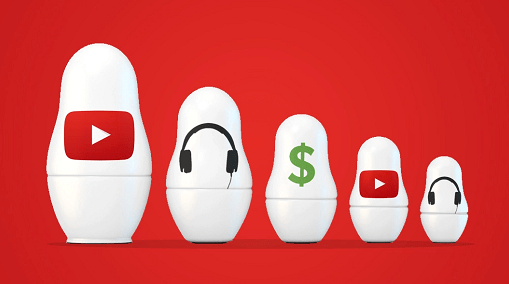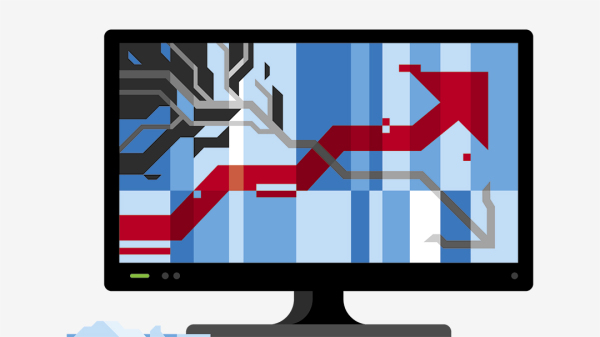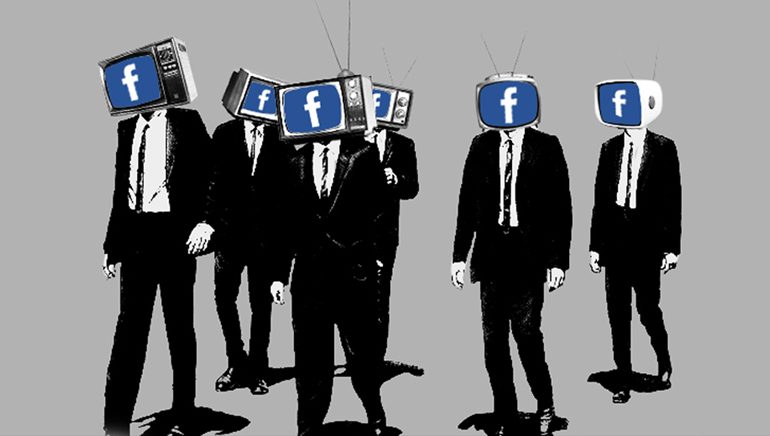By Brian Steinberg
Depending on who is doing the talking, TV’s 2020 “upfront” market was absolutely horrendous or merely awful.
Advance advertising commitments for the next year of TV could be down as much as 15% to 20%, according to six media executives and ad buyers familiar with parts of the industry’s annual negotiations for commercial support for its next programming cycle. The projected shortfall takes place after a slew of regular TV sponsors were crippled by the coronavirus pandemic, and the TV networks’ ability to showcase original content was severely hurt by scuttled and delayed productions.
More concerning, perhaps: some of the drops in advertising outlays could become permanent, as advertisers scramble to get commercials in front of a viewing public that is turning increasingly to streaming, on-demand video. “Things we thought would happen in 18 months or two years are happening in real time,” says one media buying executive. “What may have been the right path six months ago will have to go out the window.” That could leave TV fighting harder to keep ad dollars at a time when the medium needs them more than ever.
The nation’s five English-language broadcast networks could have seen the volume of ad commitments they secured for their next cycle of primetime programming fall by at least 9.3% to 14.6%, according to Variety estimates. It is the first time since 2015 that upfront estimates have sagged. Based on conversations with media buyers and other executives, Variety estimates NBC, ABC, CBS, Fox and the CW have secured between $8.2 billion and $9.8 billion for their 2020-2021 primetime schedules, compared with between $9.6 billion and $10.8 billion for primetime in the 2019-2020 season. Last year, upfront volume surged between 5.5% and 7.4% over 2018.
UPFRONT VOLUME
IN PRIMETIME, AMONG FIVE ENGLISH-SPEAKING BROADCAST NETWORKS
2010 $8.1B to $8.7B
2011 $8.8B to $9.3B
2012 $8.8B to $9.3B
2013 $8.6B to $9.2B
2014 $8.17B to $8.94B
2015 $8.02B to $8.69B
2016 $8.41B to $9.25B
2017 $8.78B to $9.62B
2018 $9.1B to $10.06B
2019 $9.6B to $10.8B
2020 $8.2B to $9.8B
Source: Variety estimates
The numbers should be taken as directional indicators, not hard, cold cash. Upfront figures are typically built on fuzzy math and rarely have any correlation to the ad money big media owners like CBS, Walt Disney, NBCUniversal, Fox Corporation and WarnerMedia collect by the end of the year. Advertisers can pull orders at certain moments in the season or “re-express” advertising if specific programming is yanked off the schedule, changing the nature of their commitment to purchase inventory. But they still serve as a sort of guide as to where money is being sent. In recent years, the figures have lent ballast to the theory that the networks can still keep new money flowing despite ratings erosion and viewers moving to streaming options. This year, the numbers indicate tricky trajectory ahead.
As bad as the numbers are, media executives say they expected worse. Movie studios, some retailers, and restaurant chains and travel marketers had little visibility on their future business, and cut spending. Automotive advertising, long a staple of TV advertising, was mixed. The networks had to rely on insurance companies. pharmaceutical marketers and big consumer packaged goods giants – advertisers whose long association with TV has given them the ability over the years to command more favorable pricing rates year over year.
“The advertisers had aggressive expectations for rollbacks, because they all thought a lot of categories were on the side-lines, that the networks were going to get really nervous because they would not have enough of a base,” says one media executive. But the TV outlets resisted some of that pressure, pushing back against harsh demands until they could talk about the return of sports like the NBA, NHL, golf, and, most importantly, the National Football League.
The upfront showed “a mix of stronger demand than many people have estimated just a few months ago,” said Comcast CEO Brian Roberts at a recent investor conference, noting that the company sees “really good signs for both the third and fourth quarter. “
To be sure, the end results were not as robust as they have been in the recent past. Big TV networks in the last three upfront sessions have been able to snare double-digit percentage increases in the cost of reaching 1,000 viewers, a measure known as a CPM that is central to these annual discussions between U.S. media companies and Madison Avenue. Last year, NBCUniversal sought CPM increases of between 13% and 14% for primetime inventory, while CBS pressed for CPM hikes of between 14% and 16%. ABC sought 14%, Fox called for 12% to 13% and the CW pushed for 14% to 15%.
One year later, the rate increases are much more paltry, with ad buyers suggesting CPM rates rose just 3% to 4% for top inventory, with some media companies consenting to single-digit percentage rollbacks for less-desirable and less popular inventory. The media companies are also said to have offered rollbacks for digital inventory – even though some of it was in high demand from advertisers that were ready to spend.
Walt Disney, ViacomCBS, NBCUniversal and Fox declined to make executives available for comment.
If broadcast faced headwinds, cable squared off against a hurricane. Some media executives believe the volume of ad commitments at cable networks could be down by 20% or more.
To keep the dollars flowing, the networks had to be flexible. They offered compelling rates on digital inventory to stoke commitments to primetime. They gave sponsors more wiggle room to claw back dollars in case of a business downturn. And they made sure advertisers would be taken care of if certain big events, such as sports matches, never made it to air.
Even so, the upfront was beset by numerous obstacles that have not impeded it in the past. Consider that in May and June, when market haggling usually takes place, few executives knew when sports might return to the field, or when primetime favourites would start to film anew. NBCUniversal’s Olympics broadcast, slated for this past summer and often a massive spur to new ad talks, was postponed. A number of prominent advertisers – including Procter & Gamble and Unilever – called for the industry to shift the upfront to the fall or later in the year. And Nielsen rolled out a new measure of out-of-home viewing for entertainment programming that the networks had to convince some advertisers to accept.
The Madison Avenue manoeuvre to push back upfront talks may have backfired, according to one media buying executive. Advertisers seeking so-called “calendar-year” deals – agreements that start in 2021 rather than the beginning of new fall TV – found higher costs, says the buyer. “I do think if anybody tried to wait to do calendar deals, they really got hurt.”
Procter undercut its own efforts, not waiting for its calls to shift the upfront to take effect. Instead, the maker of Pampers and Crest did a direct deal with ABC, CBS and NBC, according to two people with knowledge of the matter, rather than working through its agencies. The pact was for broadcast inventory only, these people say, and did not focus on cable. In September, Marc Pritchard, P&G’s chief brand officer, raised eyebrows when he said at an industry conference that “we’ve taken control of when we negotiate and buy TV media. To level the playing field, we negotiate directly with as many as possible.” Most large advertisers rely on one of the ad industry’s big media-buying firms to get such things done. The consumer-products giant declined to offer any details of its deal with the networks, noting in a statement that “we do not comment with regard to any supplier negotiations given they are proprietary to our business.”
There were still some bright spots. Ad buyers suggest NBCUniversal and Disney fared better than their competitors, buoyed to some degree by interest in on-demand hubs Peacock and Hulu. Ad money moved to streaming video across the board, with buyers looking at ViacomCBS’ Pluto and Fox’s Tubi, and even setting aside dollars for the ad-supported version of WarnerMedia’s HBO Max, which one ad executive expects to see debut in early 2021.
Some advertisers gravitated toward Discovery, which has maintained original unscripted programming at outlets like Food Network while the rollout of new comedies and dramas have slowed. Discovery said the number of clients joining its “Discovery Premiere” offer, which puts clients in a package of 30 of its best-known series, increased during the upfront to 75 from 25.
Many networks are looking to better times. Several held back upfront inventory so it can be sold in TV’s so-called “scatter” market, when inventory is purchased closer to the date it airs and is often sold at a premium. Speaking to investors recently, Fox Corporation CEO Lachlan Murdoch said the company had probably held back 5% more commercial inventory than usual in hopes of getting better prices for it later in the cycle.
The networks will need that money.
Based on Variety’s estimate of a 10% to 15% cut in volume, NBCUniversal may have seen primetime commitments fall to between $2.68 billion and $2.84 billion, compared with $3.15 billion in 2019. ABC may have seen primetime commitments fall to between $1.66 billion and $2.18 billion, compared with between $1.95 billion and $2.42 billion a year ago. And CBS may have seen primetime commitments fall to between $2.03 billion and $2.51 billion, according to Variety estimates, compared with between $2.39 billion and $2.79 billion in 2019.
The smaller networks were affected as well. Fox may have seen primetime commitments fall to between $1.36 billion and $1.64 billion, according to Variety estimates, compared with between $1.6 billion and $1.82 billion in 2019. And the CW may have seen primetime commitments fall to between $440.8 million and $$597.1 million, according to Variety estimates, compared with between $592.7 million and $663.4 million a year earlier.
The moves wipe out some the volume gains the networks have made since a three-year stretch in the middle of the decade, when the TV companies had to muscle through tougher upfront sessions in the aftermath of a large recession. They have been helped in recent years by advertiser concerns about offensive content on YouTube and other social-media outlets as well as an inability to get independent consumer data from many digital players.
Last year, Madison Avenue rushed to TV as if Tony the Tiger and the Marlboro Man were still in their prime. As more Americans move to stream their TV favorites, media companies seem to have good reason to worry about how closely advertisers will follow them.
By Brian Steinberg
Sourced from Variety




